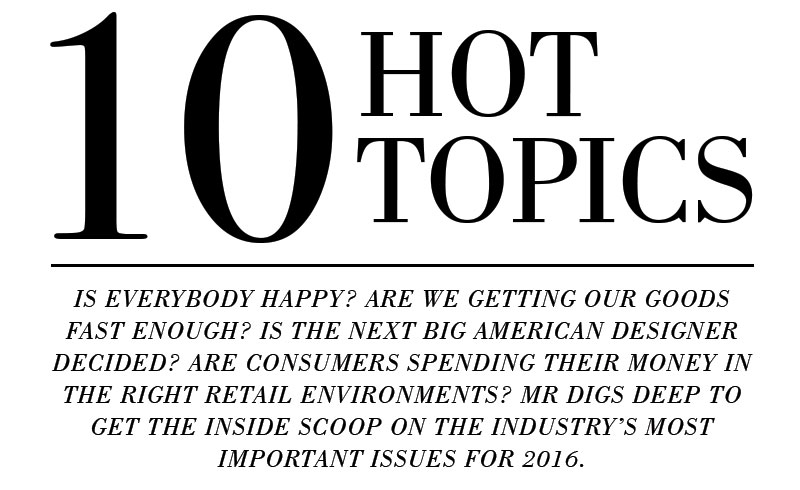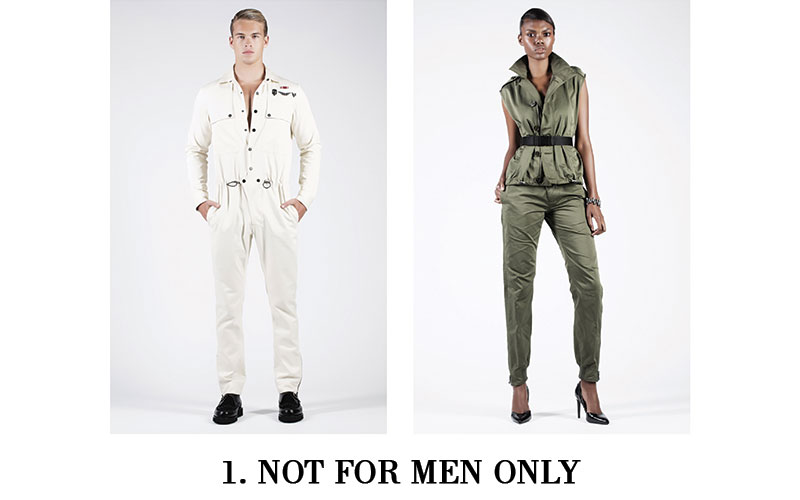MR’S 10 HOT TOPICS FOR 2016

Recently it seems every season another slew of formerly men’s-only brands are launching women’s lines. In 2015, that slew included Michael Bastian, Public School, Tim Coppens and Cadet. Even that seeming-inherently men’s shopping service, Trunk Club, founded on the idea that most men don’t like to shop, has introduced a women’s service. As if they need any encouragement: women shop socially, cathartically, even practically. But research company NPD Group reports the women’s business as over $116 billion compared to men’s more modest $60 billion. The latter isn’t exactly chump change, but still, some designers see a big opportunity.
“Raul and I were at Amarcord, a vintage fashion boutique on Lafayette Street, looking for inspiration samples and saw a group of women shopping at the boutique,” recalls Cadet’s Brad Schmidt. “They were enthusiastically shopping, trying on shoes, jackets, sweaters, dresses and everything in between, and they were not approaching shopping from necessity: they were shopping for a fun time with their friends. They were all encouraging each other to buy ‘that cute dress’, ‘those amazing shoes’ while running in and out of the dressing rooms and modeling for their friends, and they all walked out with bags and bags of purchases. We have three Cadet menswear retail boutiques in New York and I have never seen that happen, ever.”
So while there is something special about a men’s only brand, it isn’t hard to see why so many are choosing to court the female customer as well. —WB

For retailers, the issue is giving customers the immediate delivery they now expect without sacrificing profit margins. Three day delivery has become overnight delivery has become same-day delivery has become one-hour delivery, each more expensive than the next. And if the store can’t deliver on its promised timetable, customers are quick to shop elsewhere.
To make matters worse, customers no longer expect to pay for any of this. According to a recent Harris poll of 2,241 American adults, 66 percent say that shipping costs are their biggest shopping pet peeve. According to a recent study reported on the Retail Dive website, half of surveyed shoppers have a totally unforgiving attitude toward home delivery. In fact, 60 percent opt for in-store pick-up of online orders, a costly service for retailers but less costly than fast shipping and free returns.
Amazon Prime has certainly raised the bar on consumer expectations: free one-day delivery, free same-day delivery on over-$35 purchases in 16 metro areas, free two-hour delivery and one-hour delivery for $7.99. Unfortunately, few stores have the critical mass or membership income to pay for this, and many are thus searching for a new approach to fulfillment and logistics.
As for consumers demanding faster than one-hour delivery, here’s a novel idea: why not just walk into a store, find what you like, buy it on the spot and take it home with you? —KAG
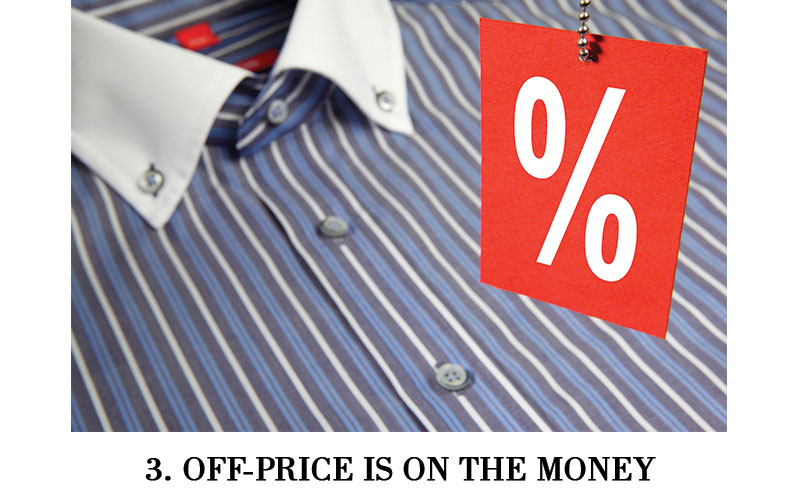
Nordstrom Rack, which now represents about 40 percent of the company’s business according to one report, is planning to have 300 branches in place in the U.S. by 2020, while Hudson’s Bay Co. will have opened well over 100 Saks Off 5th stores in the U.S. and Canada by the end of 2016 (including its first in New York City) and recently launched Find@Lord & Taylor in the shopping center capital of the Northeast (aka Paramus, New Jersey).
While these off-price stores are meant to appeal to everyone from tweens to Boomers and beyond (except those perhaps with bad feet), Hudson’s Bay president of outlets, Jonathan Greller, believes one generation is particularly excited by the off-price shopping experience. “We’ve found Saks Off 5th delivers an exciting ‘thrill-of-the-hunt’ environment to a Millennial shopper demographic,” he says.
Of course, what you’ll find may vary from store to store. Bloomingdale’s Michelle Israel pointed out that the New York City branch of Bloomingdale’s Outlet had only a small percentage of goods made directly for the store, with a larger emphasis on brand-name merchandise from previous seasons as well as current offerings. And the reality is that customers rarely seem to care about the provenance, provided they like what they see and they can afford it! —BSL
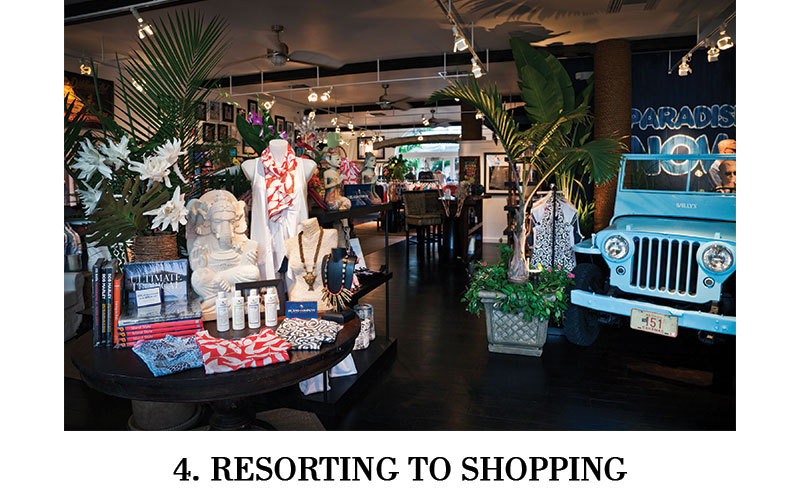
Meanwhile, taking cues from the often expansive mini-malls found in Las Vegas’ largest hotels; it’s become increasingly common to find vacation-friendly apparel shops such as Polo Ralph Lauren and Island Company inside the four walls of the nation’s top resorts.
Says Island Company founder Spencer Antle, whose newest store can be found in the 4,000-square-foot Ritz- Carlton in Fort Lauderdale: “Hotel developers have been slow to come around, because they were more concerned about room revenue than store revenue. But they’ve finally realized that some visitors, especially older people, come to resorts and really want to shop.” If this trend keeps up, who’ll ever need to pack? —BSL
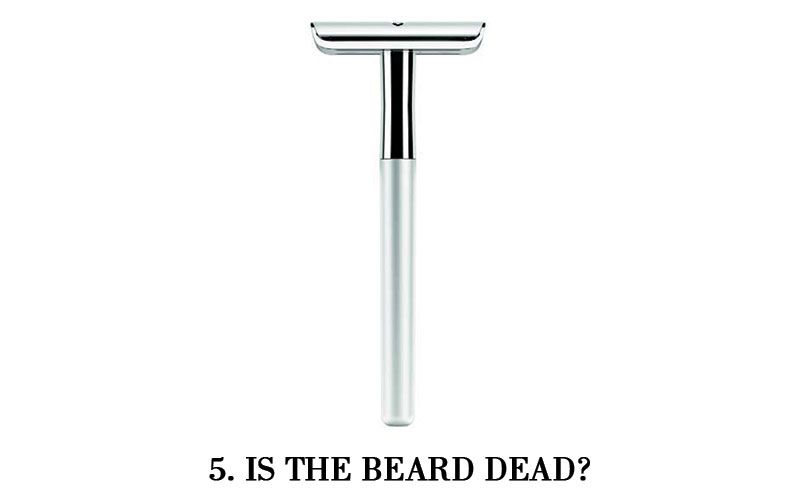
What everyone does agree on though is that if you are going to have a beard, you have to maintain it. One of the biggest myths about facial hair is that having a beard is much easier than being clean-shaven. “Maintaining a good-looking beard can take just as much, if not more, work and dedication than having a smooth shave,” says Kurt Iverson, senior communications manager, North America for Gillette.
Boye recommends using a beard oil to keep your beard smooth, while Laub insists that you see a barber to help you keep your beard trimmed to the right shape and length for your face. “It’s our job to make you the best version of yourself possible,” he notes. —MM

Stores also benefit from the Instagram revolution. “It’s where we share the store’s news, new products, and it’s the easiest way for us to communicate the Tabor lifestyle. Our customers respond to beautiful visuals,” says Laura Vinroot Poole, founder of recently opened Tabor in Charlotte, North Carolina.
In addition, larger stores like Uniqlo are utilizing the platform to get to know their customers better. “It gives us a completely democratic look at what our customers are wearing, how they’re wearing it and where they’re wearing it,” says Amandine Chow, director of Uniqlo USA digital marketing.
So if you’re not on the Instagram bandwagon, it’s time to hop aboard! Instagram isn’t just a blip in today’s marketing strategy; it’s the plan of the future, and it is here to stay. —SG
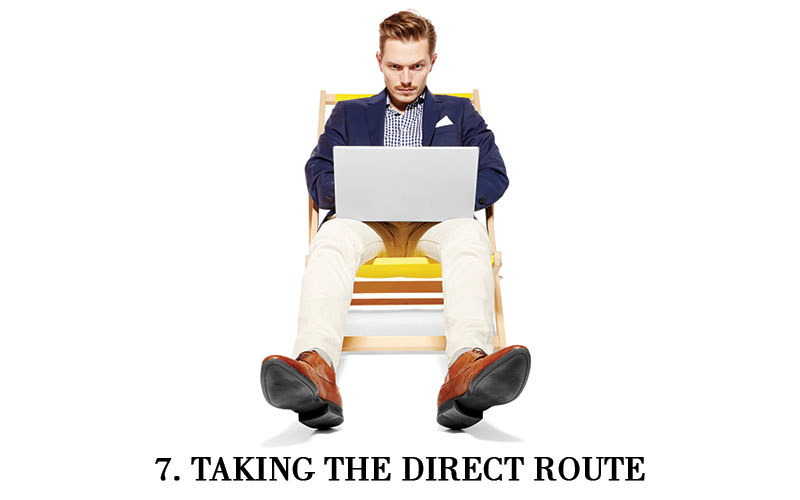
Fashion start-ups like collegiate sweater brand Hillflint, hosiery-on-demand brand Nice Laundry and LA-based denim brand DSTLD have all fostered successful growth through extensive use of multiple web-based channels, including social media, blogs and e-commerce.
Rising neckwear brand David Fin even refuses to wholesale its ties in fear of getting “lost in the shuffle” of department stores’ large furnishings departments—even if it means smaller volume. Does this trend spell the end of brick-and-mortar stores? Will your computer soon be the only way to purchase what you want to wear?
Not necessarily. According to the 2015 PricewaterhouseCoopers’ Annual Global Total Retail Consumer Survey, as online shopping continues to grow at the expense of store visits, success will be determined by creating unique, brand-defining experiences that keep customers coming back—whatever the channel.
Adds MR expert Steve Pruitt: “Retailers need to borrow strategies from e-commerce retailers, embrace digital marketing and selling, develop a promotional game plan and offer a great experience.” —SG

While the overall poor retail climate may be as responsible for markdowns as the weather, VF’s Karen Murray, president of Nautica and Kipling, points the finger at the changing retail industry. “Bringing in product early when customers don’t need it, then deeply discounting it at the end of the retail calendar when customers actually do need it, is when we all lose money and the customer wins, and they’ve been winning more and more each year. We need to lower the stacks of ‘stuff’ in the stores, promote product less and figure out what else will drive traffic.”
“The deliveries are getting earlier and earlier, and the markdowns are happening sooner and sooner, to the point that the season is never realized at full price,” says Carson Street Clothiers’ Brian Trunzo. “You’ll always have your guy who wants it first, who buys his statement outerwear in July as soon as it hits shelves, but this customer is few and far between. ‘Buy now-wear now’ customers get the deals.”
Adds Murray: “We have hurt the price-value [proposition] of apparel. Not long ago, the customer was willing to pay a fair price for lifestyle and luxury apparel, and it was rare to use a coupon. Now, customers are immune to discounts since they can ensure that they get the lowest price at the touch of their fingertip and have it delivered to their doorstep.
So the big question is: How do we create a sense of urgency for customers to purchase now rather than later? How do we entice them to appreciate great product, and believe that the price is the price? We think we have some answers that we’re testing next year, but I’m not sure I want to share them in this article.” —WB
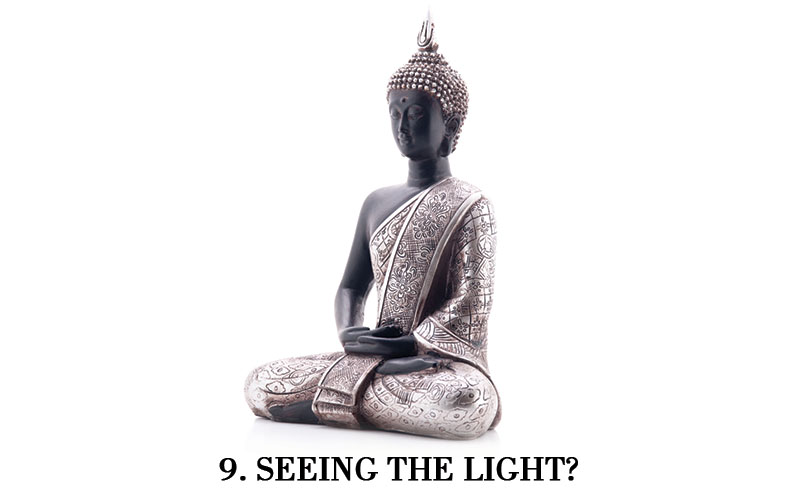
According to the website eMindful, which provides wellness programs for employees, the return on investment to employers for every dollar spent on a “mindfulness” program is $8.70. And Natalie Bell, director of corporate programs for Unplug Meditation, maintains that practicing meditation improves concentration, morale and teamwork.
So why did so many Huffington Post employees still tell the Times it’s a tough place to work: fast pace, low pay, brutal and toxic atmosphere? Is it really good business for corporations to look out for the physical, emotional and spiritual wellbeing of their employees by investing in a few wellness perks (yoga classes at lunchtime, healthy snacks, a ping pong table) or do year-end bonuses, better health insurance and a good 401K provide a greater sense of well-being? Our guess is that Baby Boomers will always choose bonuses and profit sharing whereas Millennials might opt for yoga, ping pong and/or free food.
But here’s a modest proposal: Why not query your employees and find out what might motivate them? —KAG
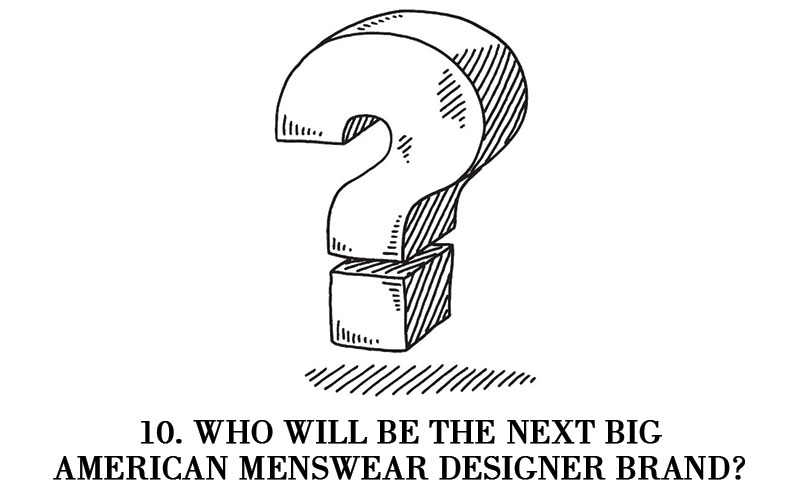
So what’s the answer? Well, there’s no clear consensus.
One hot designer whose name surfaces repeatedly is Todd Snyder, who honed his design sensibilities at J. Crew before starting his own brand in 2008 (which was sold earlier this year to American Eagle for $11 million).
Other names that come up in conversations include Thom Browne, who first made a splash some years ago with his shrunken suits, and Ovadia & Sons, whose name recognition with the general public might still take a few years.
One retailer said the next big name had yet to emerge, while another had an entirely different outlook. “There are several talented designers out there who I think will thrive, such as Public School, John Elliot and Stampd. But I think the days of a dominant mega-designer brand are over.” —MM



